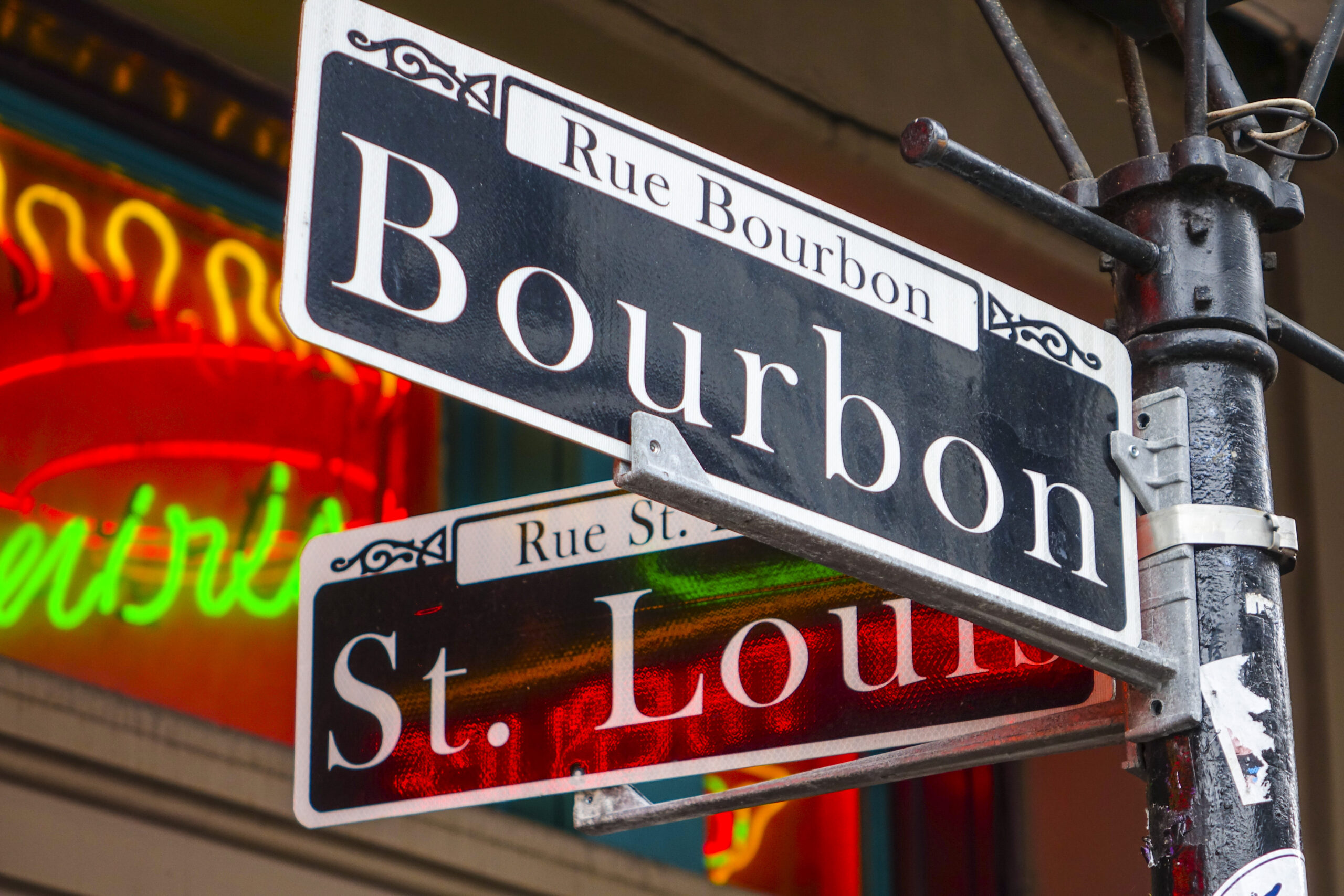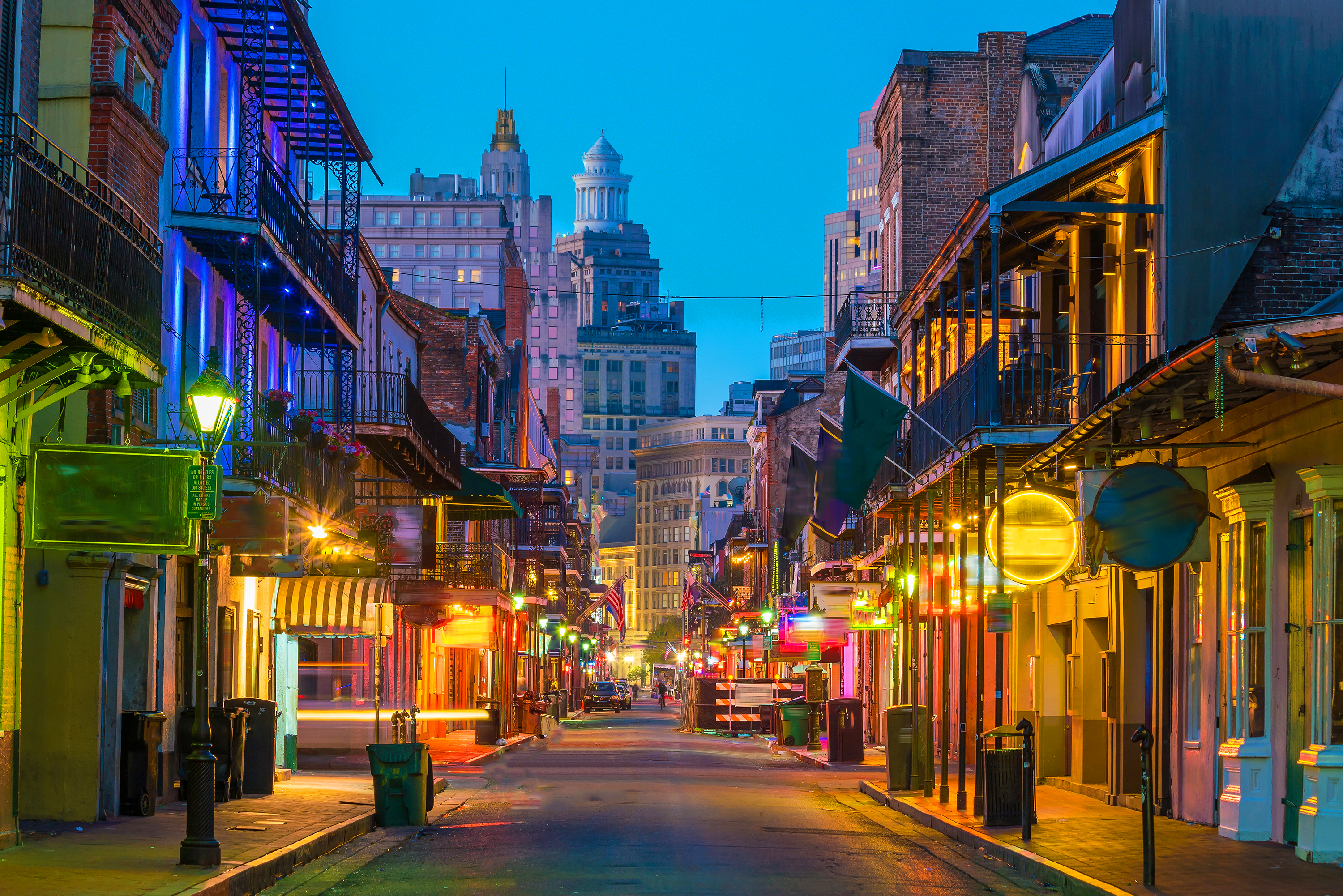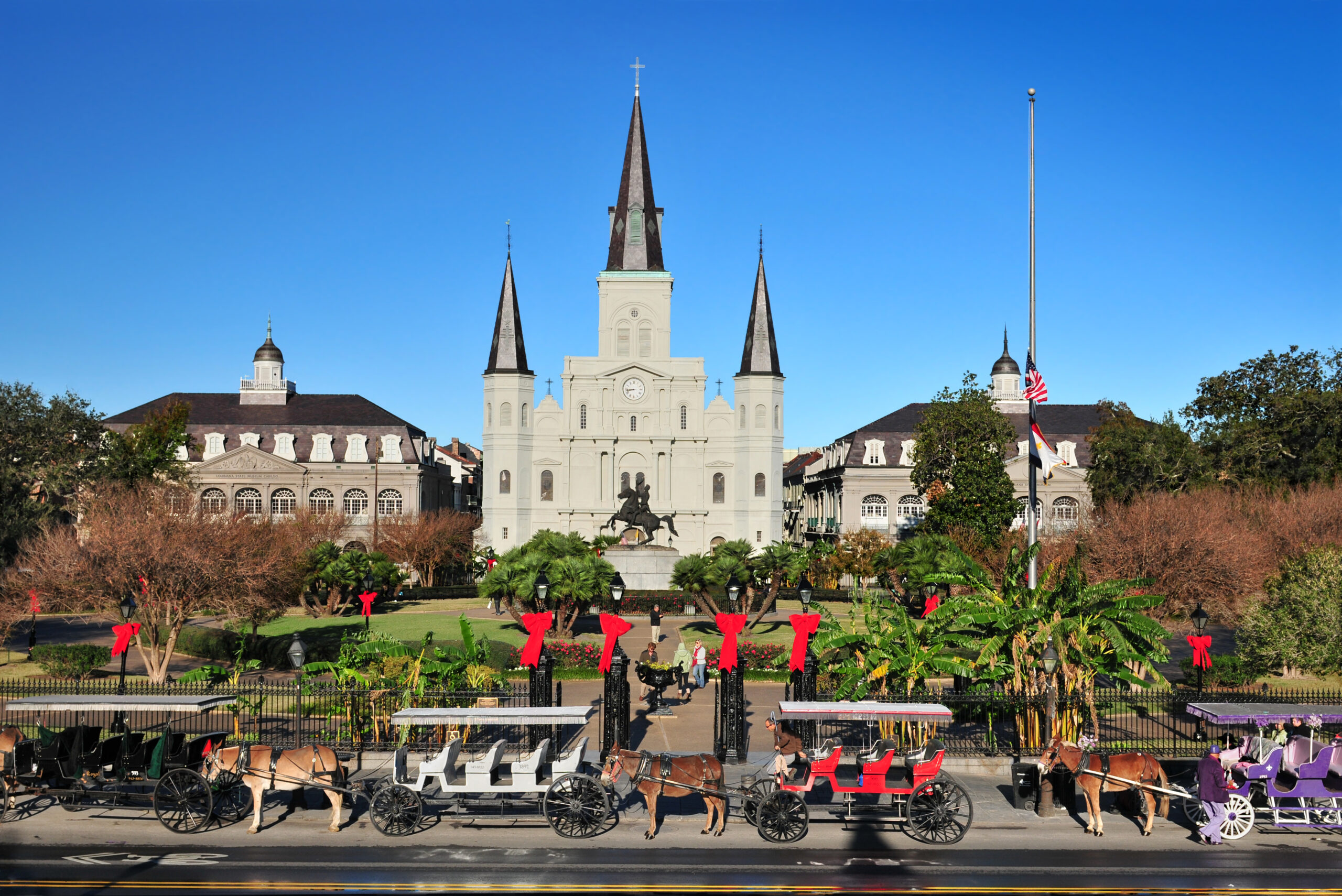From Jazz to Jambalaya
Welcome to New Orleans! Also known as Nawlins, the Crescent City, or the Big Easy. Whatever name suits your fancy, get ready for an incredible adventure of a lifetime. Located along the banks of the Mississippi River, it’s known for its blend of influences from French, African, Caribbean, and Spanish cultures. From its lively music scene and mouthwatering cuisine to its colorful festivals and captivating architecture, New Orleans offers a unique and unforgettable experience.
New Orleans is a city that captivates visitors. It’s a place where the past and present blend seamlessly, creating an enchanting tapestry that inspires and leaves a lasting impression on all who visit. New Orleans is one of our favorite cities in the world, and we recommend everyone visit AT LEAST once in their life.
Keep scrolling for an introduction to New Orleans. Discover what makes it unique and special and why nowhere else on earth blends jazz music and crawfish together quite like Nawlins.’
History of New Orleans
New Orleans is a city with a history that blends French, African, Caribbean, and Spanish influences. Founded in 1718 by the French, the city quickly became an important trading post due to its location on the Mississippi River and the Gulf of Mexico. Its early years were spent with its control passing between the French, Spanish, and eventually the United States with the Louisiana Purchase in 1803.
Thanks to the city’s blend of cultures, the music scene thrived, characterized by jazz, blues, and Zydeco. The birthplace of jazz, New Orleans became well known for its musicians with famous venues like Preservation Hall and the jazz clubs of Frenchmen Street.
New Orleans became a melting pot of cultures, attracting immigrants from around the world. Today, it’s known for its distinct architectural styles, such as Creole townhouses in the French Quarter and colorful shotgun houses throughout the city. Its culinary scene is legendary, with iconic dishes like gumbo, jambalaya, and beignets, and the city’s cultural festivals, including Mardi Gras and the Jazz & Heritage Festival, celebrate the city’s unique heritage and lively spirit.
Impacts of Hurricane Katrina
Hurricane Katrina, which struck New Orleans in August 2005, had a devastating impact on the city and its residents. The storm caused catastrophic flooding, loss of life, and extensive damage to infrastructure. However, this showed just how special New Orleans truly is.
The city embarked on a long and challenging journey of rebuilding and has now transformed itself into a model of resilience and community spirit. It has implemented innovative flood protection systems, invested in sustainable infrastructure, and prioritized the preservation of its unique cultural heritage. New Orleans is a shining example of how a community can unite, rebuild, and create a better future in the face of disaster.
New Orleans Highlights
New Orleans offers a one-of-a-kind experience that celebrates its resilient spirit and southern charm. Whether you’re strolling along the lively streets of the French Quarter, indulging in delectable cuisine, or immersing yourself in the soulful melodies of jazz, visiting New Orleans promises unforgettable sights, sounds, and flavors.
· French Quarter: The French Quarter, also known as Vieux Carré, is the historic heart of New Orleans and a vibrant neighborhood that embodies the city’s heritage. Its narrow streets, charming architecture, and ironwork balconies showcase an old-world charm blended with a contemporary atmosphere. Thanks to its street performers and a multitude of jazz clubs, it offers visitors a glimpse into the soul of the city.
· Bourbon Street: Bourbon Street is one of the liveliest streets in the country and an essential stop for those seeking a taste of the city’s legendary nightlife and vibrant entertainment scene. The street is lined with various bars, clubs, restaurants, and shops, offering a mix of live music, delicious cocktails, and authentic cuisine.
· Jackson Square: Jackson Square is a historic public square named after the seventh President of the United States, Andrew Jackson. It is a gathering place for artists, street performers, and visitors, offering a vibrant atmosphere filled with music, art, and the lively energy of the city. The focal point is the stunning St. Louis Cathedral, one of the oldest continuously active Roman Catholic cathedrals in the United States.
· Frenchmen Street: An alternative to Bourbon Street, and a local favorite, is the iconic Frenchmen Street. It is a haven for music lovers and those seeking an authentic New Orleans experience. The atmosphere and lively and electric but more laid back than its famous neighbor. It is located just outside the boundaries of the French Quarter and is home to art galleries, street performers, and a diverse selection of restaurants and bars.
· Lafayette Cemetery No. 1: Lafayette Cemetery No. 1 is a historic cemetery located in the Garden District of New Orleans. Dating back to 1833, it is one of the city’s oldest and most notable resting places; and, by far, one of the coolest-looking cemeteries in the country. It is characterized by its above-ground tombs and ornate architectural details, offering a glimpse into New Orleans’ unique burial practices. It is not only a place for reflection and remembrance but also a historical and cultural treasure.
· Mardi Gras: Mardi Gras, also known as “Fat Tuesday,” is an iconic and widely celebrated festival in New Orleans, Louisiana. The origins of Mardi Gras can be traced back to medieval Europe and were brought to the United States by French explorers who settled in New Orleans. Today, the festival has evolved into a unique and vibrant celebration that showcases the city’s heritage. It typically falls in late February or early March, depending on when Ash Wednesday is
What to Eat in New Orleans
The food scene is one of the BEST parts of the Big Easy, as it is a food lover’s paradise. From traditional Creole and Cajun dishes to innovative modern interpretations, the cuisine in New Orleans is diverse and flavorful and will surely leave a great impression on your taste buds.
During your stay in the city, some of the best cuisine options to try are Po’Boy sandwiches, Gumbo, Beignets, Jambalaya, and Red Beans & Rice.
New Orleans is a city unlike any other, a melting pot of culture, history, and vibrant energy. From the soul-stirring rhythms of jazz to the mouthwatering flavors of Cajun and Creole cuisine, every corner of the city holds a story waiting to be discovered. It goes without question that New Orleans leaves an indelible mark on the hearts of all who visit. We hope this guide has convinced you to take a trip to the Big Easy and discover the magic and excitement for yourself.




Leave a Reply